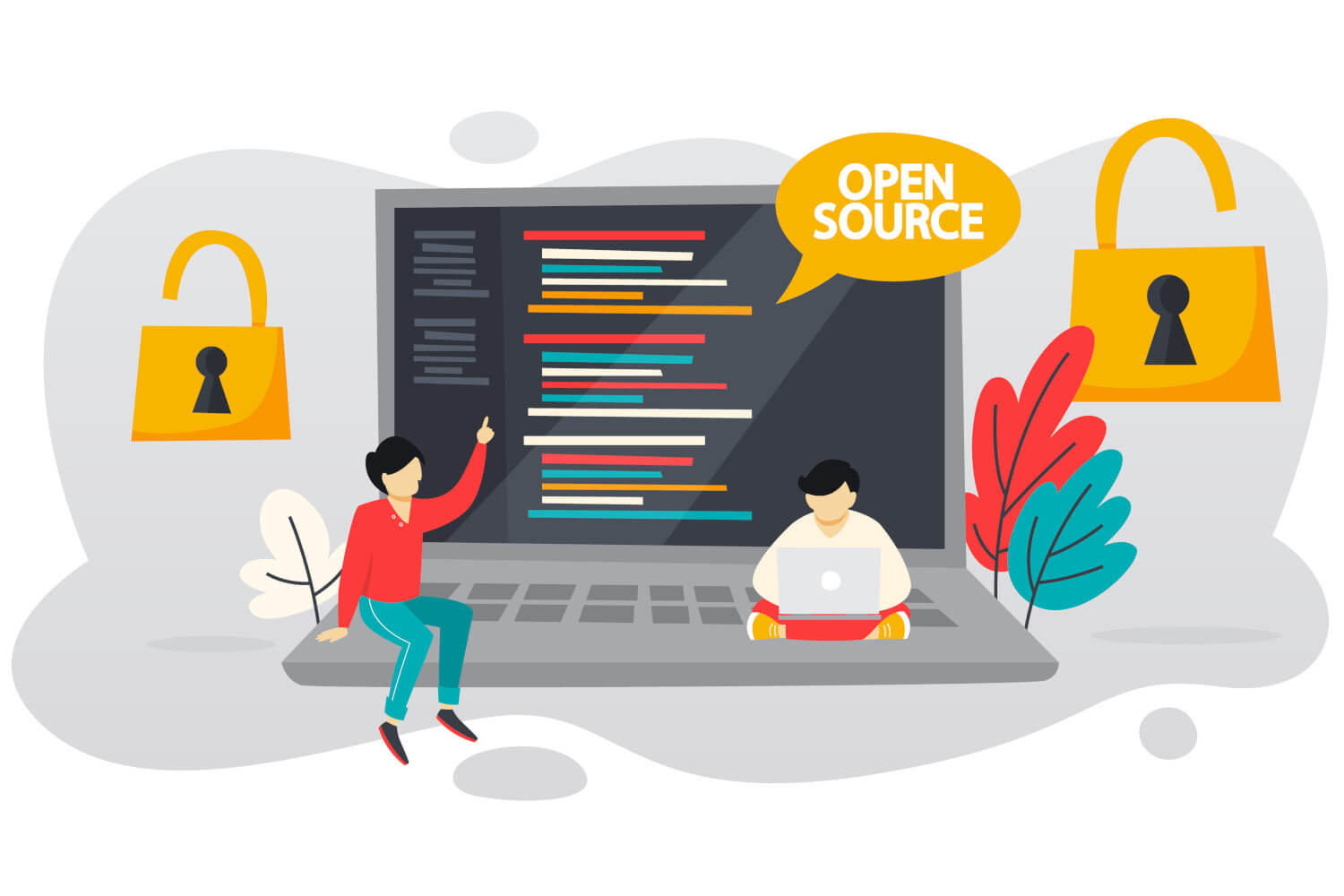 The viadee Process Warehouse (vPW) is a tool for the analysis of business processes and enables the visualization of process key indicators directly on the process model. Since 2022, the vPW components are available as open source projects in GitHub. What does our new open source strategy imply for you? You can easily integrate the tool into your own process architecture free of charge, get a quick insight into your business process metrics and can actively participate in the further development of the analysis tool.
The viadee Process Warehouse (vPW) is a tool for the analysis of business processes and enables the visualization of process key indicators directly on the process model. Since 2022, the vPW components are available as open source projects in GitHub. What does our new open source strategy imply for you? You can easily integrate the tool into your own process architecture free of charge, get a quick insight into your business process metrics and can actively participate in the further development of the analysis tool.
The vPW for Process Analysis
Process management and automation of business processes are essential success factors for companies, regardless of size and industry. Once the first steps have been taken, the question quickly arises: How "good" are our processes? Is there any further potential for optimization? This is when the viadee Process Warehouse (vPW) comes into play: During the (partially) automated execution of business processes, a valuable database of process logs is created, which provides the basis for a process-oriented analysis. Thus, the vPW closes the lifecycle of business process management.
Typical process analysis questions include:
- Which process paths are traversed particularly frequently? Are there any avoidable bottlenecks, for example, by increasing resources?
- What is the average runtime of process instances? What service times can be promised, e.g. in the context of service level agreements?
- How long does it take to process user tasks? Are there potentials for improvement or savings?
- What is the degree of automation of a process? How often does an administrator still have to intervene manually?
- What are the key figures for certain process variables (e.g. the average claim amount)? Are there noticeable, unexpected differences between process paths?
- How do this month's process metrics compare to the previous month? Are there differences between different clients?
With the vPW, exactly these and other questions can be answered.
The vPW enables the visualization of process key figures directly on the process model, so that the process reference is not lost in the analysis phase of the BPM cycle. This also makes it possible, for example, to track the development of process key figures in the course of the process. In addition, smart filter functions (e.g. by process elements, process variables, or time periods) support an interactive analysis.
In the spirit of interactive self-service analysis, the process analyst can define key figures at runtime and evaluate them in real time. This enables an explorative and intuitive approach instead of having to define all requirements in an preceding modeling phase.
A look under the hood: The architecture of the vPW
The automated execution of business processes usually generates extensive log data in the form of event logs (e.g. "process instance started", "activity completed", "variable written"). These events are read by vPW components and prepared for the subsequent calculation of process key figures. Well-scalable Big Data technologies (Apache Kafka, Elasticsearch) can efficiently handle large amounts of data with a high number of process instances.
The following graphic provides an overview of the architecture described:
.png?width=1414&name=Architektur%20f%C3%BCr%20Blog%20(englisch).png) The Camunda-Polling-Client reads log data from the Camunda database (per JDBC or RESTful-API) to Apache Kafka. The vPW pipeline is a Kafka consumer and persists process data to the central data store, Elasticsearch. The vPW analyzer serves process figures to the vPW Web-App and allows "on-the-fly" calculations.
The Camunda-Polling-Client reads log data from the Camunda database (per JDBC or RESTful-API) to Apache Kafka. The vPW pipeline is a Kafka consumer and persists process data to the central data store, Elasticsearch. The vPW analyzer serves process figures to the vPW Web-App and allows "on-the-fly" calculations.
Thus, the vPW itself consists of several components that can be scaled independently of each other and are designed for operation on container platforms (esp. Kubernetes). The vPW architecture is designed as an open architecture. This means that other process engines can potentially be connected in addition to Camunda Platform (Community and Enterprise Edition). The data in Kafka and Elasticsearch can also be used by other clients. One example is bpmn.ai, an AI solution by viadee, where the process data stored in Kafka is used for machine learning algorithms. In addition to vPW, Kibana allows to visualize the key figures in the form of diagrams.
Github project: Try the vPW on your own processes
We provide the vPW components as open source projects in GitHub. Analyzer and Pipeline are located in our GitHub repository vPW. The polling client can be found in the GitHub Repository camunda-kafka-polling-client. Here you can also find preconfigured docker-compose files or Helm Charts to try out the vPW on your own processes.
On the one hand, you can start the vPW locally as a containerized application via docker-compose with all components required, such as database, Elasticsearch and Kafka. You can use the deposited Camunda sample process or deposit your own process engine and database in the docker-compose file. We have also thought of future developers of the vPW: An alternative docker-compose file considers all components except the pipeline and analyzer. Pipeline and Analyzer should be started via the development environment, so that changes in the code can be tested directly in the entire vPW ecosystem.
The Helm Charts allow you to deploy to your own Kubernetes cluster. Each component has its own Helm Chart. However, we recommend that you use the Umbrella Chart that we provide. This combines the charts of Analyzer, Pipeline, Frontend and Polling Client in one Helm Chart and thus simplifies the deployment.
Otherwise, you are welcome to take a look at the vPW and its features in our demo environment at any time.
Are you interested? Would you like to take the next step? Contact us.
Do you need help setting up the solution in your company? Would you like to develop company-specific extensions, e.g. the connection of another process engine? Do you need help analyzing your process data? Please contact us.
In the Business Process Management (BPM) section of our homepage you will find viadee's range of solutions.
Back to blog overview



